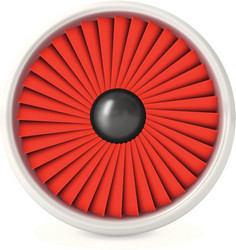Rotor blade control in green aero engines
As globalisation increases, so does air travel bringing people together for business and pleasure. A unique public-private partnership within the EU (Clean Sky) is supporting research and development of new designs and technologies to decrease the environmental impact of flight. The contra-rotating open rotor (CROR) engine concept is among the most promising designs. It is poised to replace the turbofan that has historically propelled jumbo jets through the skies, slated to achieve a 20 % reduction in emissions. A critical component of the validation will focus on controlling the blade pitch to modulate aircraft power and speed, something not required in turbofans. EU-funded scientists investigated options within the context of the OREAT (Open rotor engines advanced technologies for rotor blade pitch change mechanism) project. Open rotor concepts have been around for a while, but have faced issues with noise and safety since the open design means there is no fan case. Intensive research and redesign have addressed these issues and a technology demonstrator is in the works. OREAT took the specifications associated with the CROR demonstrator engine scheduled for ground testing at the end of 2015 as a starting point. Based on these specifications, the team considered a plethora of pitch change mechanism (PCM) concepts. After a preliminary screening, the most promising designs were subjected to a comprehensive evaluation of reliability, safety, weight, efficiency, controllability, maintainability, durability, maturity and cost. From this, a single design was chosen. Based on well-established reliability data, OREAT showed that the current best design could not fulfil certification safety requirements specifically related to a potential in-flight shutdown. The follow-up project, OREAT II, will pick up where OREAT left off and focus on PCM risk reduction to achieve a certifiable PCM for Clean Sky's technology demonstrator. OREAT results have made a significant contribution to the development of a safe and reliable CROR concept by paving the way to reduction of risk associated with its critical PCM. Having narrowed designs based on a number of criteria, scientists are now moving the most promising PCM concept into the optimisation phase.







